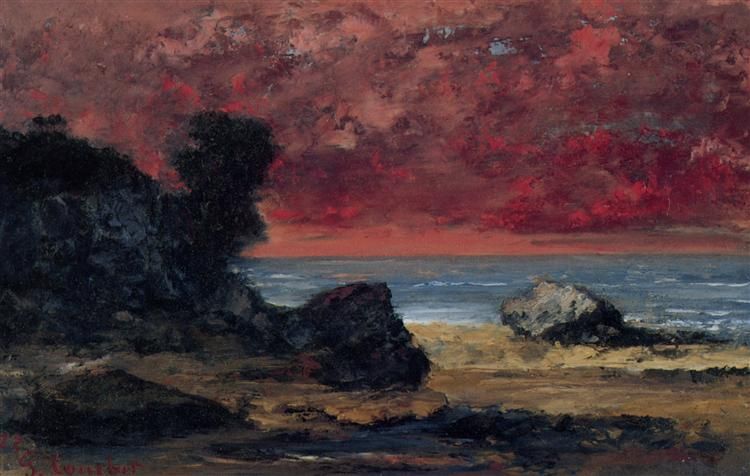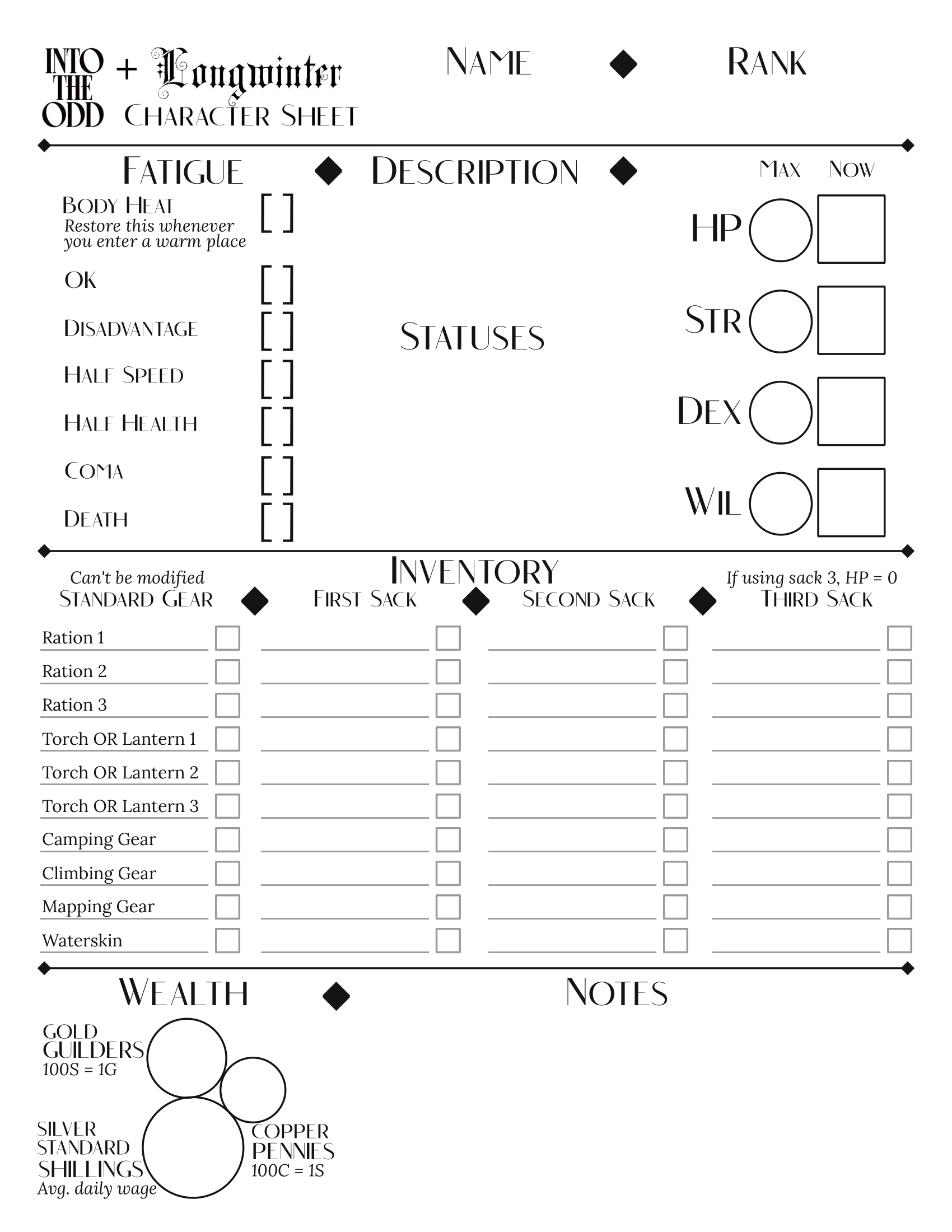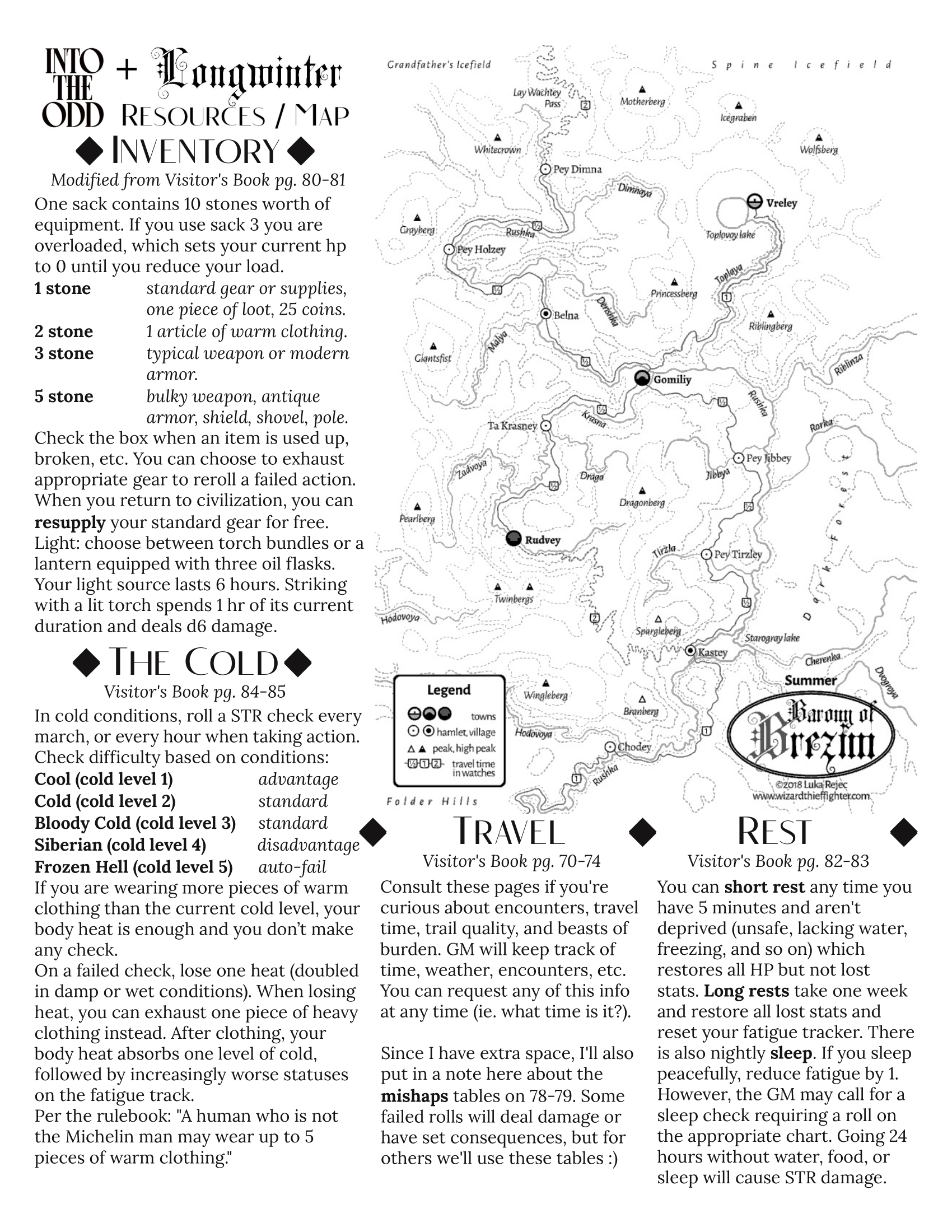Title: Brezim ’77 Retrospective, Part One
Brezim ’77 Retrospective, Part One
Heike wrote this. It was originally published on a personal blog on Oct 19, 2022.
I’ve been talking up my minicampaign called Brezim, 1877 practically since it started—I found it a tremendously intuitive and healthy game on the GM side–two months of old school fundamentals with good player attendance and tactile, exploration-based gameplay. The campaign concluded last week after its eighth session. It was highly reliable, perhaps a bit too reliable! A certain roteness crept in once we internalized the fundamentals of the style.
I’m excited to move on to more advanced old school play in the future, but my more immediate hope is to carry these lessons into a narrative campaign game next month. In this post, I’m going to talk about three big aspirations for the game, then outline a bit of prep. Next week, talking out some strengths and weaknesses of the playstyle, and in week 3 I’ll post a few tables and talk about GM-side techniques which worked and didn’t.
 Gustave Courbet, After the Storm
Gustave Courbet, After the Storm
Three Pillars
The first pillar of the game is the Barony of Brezim itself, taken directly from Luka Rejec’s Longwinter, a fictional central Europe setting book with a great mix of cozy and creepy setting elements, as well as some fantastic weather and inventory management systems.
The second pillar was Chris McDowall’s Into the Odd, which got me away from some unsuccessful experiments with Keep on the Borderlands. I’d been unsuccessfully running Moldvay Basic D&D, a system which generally confused my players and seemed to promote reactive and uncreative play. Into the Odd had an immediate impact in terms of getting player attention off the character sheets and onto the scheming, investigating, hinge-removing, item-swapping, joking-around gameplay I’d been desiring within the first session of play.
In these Into the Odd oneshots, I took a simple map and dropped a few old school dungeons onto it, then offered them to players in pretty explicit terms. These sessions were invariably successes, and the dungeon-menu approach would prove to be the third pillar for an actual old school campaign. Separating my creative work from the gamerunning made a big difference in how effectively I presented the materials, reminding me to run the game honestly and mechanically and to enjoy the bumpy texture of a game that’s had many pairs of hands on it.
Frequent, Casual Participation
I’d designed the game to be forgiving to player drop-ins and drop-outs, and was anticipating inviting extra players once we’d make it a few weeks in. As it turned out, the regulars (Elle, Zach, Clair, Jared) were so reliable that we only dipped to two players twice—and even this was only because Jared had to miss half the games because of preexisting commitments! I think the drop-in/ drop-out friendliness and ability to set your own emotional stakes here contributed to strong casual participation here.
Exploration-Based Gameplay
Let’s say I have a boulder at the top of a hill, and I’ve wedged it with a single, rickety plank. I want to see them use their characters’ hands and eyes to fuck with it. If it crushes them, they should mourn their foolishness, and if they roll it onto their enemies I want their cleverness to be on full display. Introducing too many random or dice-based elements is going to detract from this game style. It’s not all threats, either, but a world that’s genuinely interesting–treasure that’s hidden or protected, funny personalities, a world full of glooming and gleaming things around the corner. Common traps like the pressure plate and trip wire are classics for a reason, but in a world where you can just narrate stepping over them they can become obvious and tiresome quickly, and a really special trap or item can be the centerpiece of a good dungeon.
Players who peer under doors and take interest in loose cobblestones make me extremely happy, but there can be a delicate balancing act re: relevant description–if there are bugs under the floor, should I describe small numbers of discarded exoskeletons and barely-audible chittering, or is that a matter for closer investigation? Players can falsely assume you’ve given them all information, or simply get impatient at their GM’s slow-moving style, and roll ahead to disaster. GM skill is really on display when confronted with these sorts of problems. Moderating action requires much of the same skill.
In our final session, the players seemed comfortable in the doorway of the room, proposing actions and so on–and so I volunteered that the party’s expert hireling to casually walk through the door and start poking around. Two oozes dropped immediately from the ceiling right on top of him. It turns out they party had intended a more cautious approach to the room, and tripping this encounter resulted in a hireling death and some dire, slimy combat for everyone else. It was a serious mistake to directly narrate this hireling action without allowing interruption–and once I’d done so, there was no going back!
Player Initiative
I’m a self-conscious player, but I manage pretty well in both these old school games and indie story games. It’s the trad game that gives me real issues—the one where I feel repsonsible for world consistency, dramatization, pacing, stage direction, player management, etc. It’s guaranteed to leave me jittery and completely drained even after a good session—leaving me wondering why one player was listeless and what I could’ve done about it, or whether a plot point landed, or why a very soft prompt got no response, or whether a hard one was tiresomely straightforward, and so on.
Making old school play successful had the knock-on effect of divesting me from dramatization, pacing, and social wrangling—I found my players usually look to the GM for this, but that they’re often better-equipped to take initiative on these matters than the actual gamerunner. For example, when players feel responsibility for pacing and session length they’re free to manage their own time spent on characterization, relaxation, or making jokes and eating chips. I’m very used to the sensation that my prep and hard-earned narrative momentum are running down the drain, but without certain scenes to hit or challenges my heart is set on, I just run the world; when everyone’s joking around or gossiping—I can be right there with ’em. Feels like normal human behavior rather than a rejection of my game direction.
Player initiative was necessary on a gameplay level, with the best moments occurring when players explored the world fluently, confidently stated their actions, and looked to each other for advice and strategy rather than waiting for GM prompts or correct solutions. This has the added benefit of making sure players have enough decision-making time—their pacing is always slower than I would’ve guessed, but it’s generated some smart play in general.
The Actual Prep
I’d estimate my total prep time was something in the range of 30-50 hours, which was more than sufficient for ~25 hours of gameplay—it probably could’ve lasted twice that with no extra prep. I was already fully familiar with Into the Odd, so most time was spent on reading and adapting Longwinter and on dungeon management. This work was front-loaded, especially the system work, which involved hybridizing Longwinter’s heat management and inventory use with Into the Odd—an innovation that was an extremely fun design project but turned out to be a bit low-impact, as my players managed the calendar extremely efficiently and we stayed in late summer and autumn for the entire campaign.
 Brezim Character Sheet
Brezim Character Sheet
Besides sheets, I’d also created some GM materials for tracking overland travel and dungeon turns. I designed for a game I had barely played, and so it was inevitable that I’d hit on some great ideas and some poor ones. The dungeon sheet was extremely valuable in reminding me to track encounters and light sources. When I asked each player what they were doing each hour and recorded it, I’d get substantially more interesting answers and I felt confident that I was hearing from every player. However, I often neglected this when the party was acting and exploring together–this saved time, but meant that I mainly heard from whichever players were most assertive that day.
 Brezim Map + Info
Brezim Map + Info
The session sheet was always a mess, with the weather section invariably used for combat. My character, hireling, and treasure sections were always full and the other sections were either totally unused or filled up with completely unrelated notes. It would require a complete redesign if I ran this concept again.
Dungeons
Sessions late in the campaign were extremely easy to manage–I just revisited a few modules and re-familiarized myself with them. As for the modules themselves, here the ones we spent at least a little time in. I had quite a few more in my back pocket, but we never got around to them!
- Tomb of the Serpent Kings — Fantastic dungeon in terms of interactivity, but players found it a bit sketchy and unreliable—more on this next week. The lessons were good, but many of them resulted in an “avoid this dungeon” attitude.
- Bergal’s Blunder — Felt linear and creature-reliant, created a TPK when party took a picnic in the entrance hall and got flanked.
- Dark Well — Perfectly on theme. Players thought it was a lot deeper and more important than it actually was and were pretty sad when they lost the holy emblem that got them entrance to the back rooms.
- Ernie Wyver’s Museum of Oddities — Hands-on, goofy exploration. The pattern of “touch a thing and trigger a trap” got a little samey.
- Beneath Anisa’s Tower — Very dense for a one-pager, brilliant unique obstacles and enemies. Players got a full session and could’ve gone another full one if the game hadn’t ended.
- Steve Kilian’s Old School Revival — Great theme, but a bit linear and combat-reliant. Players love/ hate slime, a great reason to have as much slime as possible.
- Lair of the Serpent Lord –What felt at first like a rather empty and overly-rational dungeon generated extremely intuitive, flavorful play that perfectly fit in a single session.
Concluding Thoughts
Part two will be about player input on the game style and specific issues that emerged while playing-–Zach and Clair have given me some great discussion so far! In part three, I’ll drop in our character table and session summaries, then wrap up with some thoughts on how to run this game better in the future.